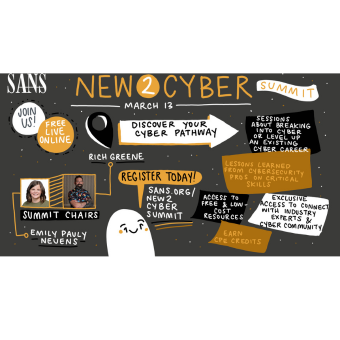Tags:
You’re probably familiar with the castle and moat analogy. It was often used as a common model that organizations would use in the “dark ages” of cybersecurity. They would build a figurative cyber moat around their networks in a valiant effort to protect their organization. Over time, however, people came to realize that the notion of a singular defense to keep the bad guys out (think: firewalls) weren’t as effective as they had hoped. As organizations matured, they sought out models that would enable them to better understand how cyber attackers operated and better ways to defend against them. Enter: the Cyber Kill Chain model.
What is the Cyber Kill Chain Model?
‘Kill chain’ is a term originally used by the military to define the steps an enemy uses to attack a target. In 2011, Lockheed Martin released a paper defining a Cyber Kill Chain. Similar in concept to the military’s model, it defines the steps used by cyber attackers in today’s cyber-based attacks. The theory is that by understanding each of these stages, defenders can better identify and stop attackers at each of the respective stages. The more points at which you can intercept the bad guys, the better the chance you have to deny them from their objective or force them to make enough noise where you can more easily detect them.
Since 2011, various versions of the “Cyber Kill Chain” have been released, including AT&T’s Internal Cyber Kill Chain Model and the Unified Kill Chain. However, I’ve found the Lockheed Martin model to be the most informative at focusing on the human element and how it addresses the cyber kill chain model.
To date, the vast majority of organizations and security professionals have taken a technology approach to leveraging kill chain models, ignoring the human side, which in my opinion, is gross negligence. Organizations miss a tremendous resource that can enable them to far better protect, detect, and respond to today’s relevant cyber threats.
Security awareness is nothing more than a control, just like encryption, passwords, firewalls, DLP, or anti-virus. What makes security awareness unique is that it applies to and manages human risk. As security awareness addresses the human element, people often feel it does not apply to the cyber kill chain. Wrong.
Neutralizing a Cyber Attack using the Cyber Kill Chain Model:
![]()
1. Reconnaissance: The attacker gathers information on the target before the actual attack starts. Many security professionals feel that there is nothing that can be done about this stage, but that’s beyond wrong. Quite often, cyber attackers collect information on their intended targets by searching internet sites like LinkedIn or Instagram. They may also try to gather intel through techniques such as calling employees, email interactions, or dumpster diving.
This is where secure behaviors can have a big impact. An aware workforce will know they are a target and limit what they publicly share. They will authenticate people on the phone before they share any sensitive information. They safely dispose of and shred sensitive documents. Does this totally neutralize this stage? Absolutely not, but then again, no control fully does. However, this can put a big dent in the attacker’s capabilities to gather information. A properly trained workforce can report suspicious activity, such as odd phone calls probing for more information.
![]()
2. Weaponization: The cyber attacker does not interact with the intended victim. Instead, they create their attack. For example, the attacker may create an infected Microsoft Office document paired with a customized phishing email, or perhaps they create a new strain of self-replicating malware to be distributed via USB drive. There are few security controls, including security awareness, that may impact or neutralize this stage, unless the cyber attacker does some limited testing on the intended target.
![]()
3. Delivery: Transmission of the attack to the intended victim(s). For example, this would be sending the actual phishing email or distributing the infected USB drives at a local coffee shop or cafe. While there is an entire technical industry dedicated to stopping this stage, people also play a critical role.
While people aren’t proficient at remembering lots of new information, they are very good at being adaptable. They generally follow that “this does just not seem right” instinct. In addition, the 2019 Verizon DBIR found passwords and phishing as the two primary attack vectors, both involving people. As such, it is people and not technology that are the first line of defense in detecting and stopping many of these attacks, to include new or custom attacks such as CEO Fraud or Spear Phishing. In addition, people can identify and stop attacks that most technologies cannot even filter, such as attacks over the phone. A trained workforce greatly reduces this attack surface area.
![]()
4. Exploitation: This implies actual ‘detonation’ of the attack, such as the exploit running on the system. Trained people ensure the systems they are running are updated and current. They ensure they have anti-virus running and enabled. They ensure that any sensitive data they are working with is on secured systems, making them far more secure against exploitation.
![]()
5. Installation: The attacker installs malware on the victim. Not all attacks require malware, such as a CEO fraud attack or harvesting login credentials. However, just like exploitation when malware is involved, a trained and secure workforce can help ensure they are using secure devices that are updated, current, and have anti-virus enabled, which would stop many malware installation attempts. In addition, this is where we begin to go beyond just the “human firewall” and leverage the “human sensor”. A key step in detecting an infected system is to look for abnormal behavior. Who better to detect abnormal behavior than the people using the system every day?
![]()
6. Command & Control: This implies that once a system is compromised and/or infected, the system has to call home to a Command and Control (C&C) system for the cyber attacker to gain control. This is why ‘hunting’ has become so popular. They’re looking for abnormal outbound activities like this.
![]()
7. Actions on Objectives: Once the cyber attacker establishes access to the organization, they can then execute actions to achieve their objectives. Motivations vary greatly depending on the threat actor. It may include political, financial, or military gain, so it is very difficult to define what those actions will be.
Once again, this is where a trained workforce of human sensors embedded throughout your organization can vastly improve your ability to detect and respond to an incident, vastly improving your resilience capabilities.
In addition, secure behaviors will make it far more difficult for a successful adversary to pivot throughout the organization and achieve their objectives. Behaviors such as the use of strong, unique passwords, authenticating people before sharing sensitive data, or reviewing their last login are some of the many behaviors that make the attacker’s life far more difficult and result in them being far more likely to be detected.
What can Security Awareness Programs do to Help?
As an awareness community, let’s try to stop perceiving cyber security in just technical terms. To me, it seems almost criminal that so many organizations fail to invest in an amazing resource – their people. Time and time again I work with organizations around the world who share stories on how it was ordinary people who stopped an attack in its tracks, especially targeted or personalized attacks.
As long as we continue to ignore the human element and focus on technology alone for all of our security defenses, we will continue to lose the cyber battle.
*This blog was originally published February 2018. It has been updated to further focus on how organizations can leverage and address the cyber kill chain model in their effort to reduce their human risk element.


